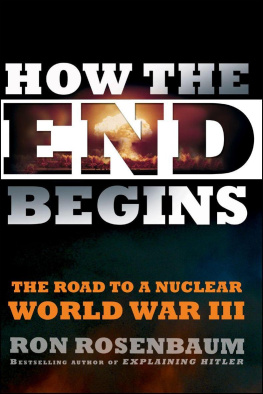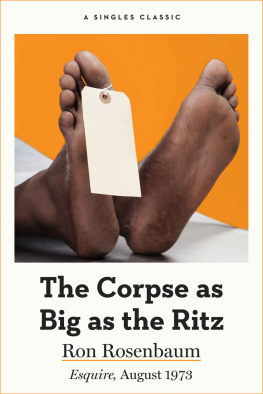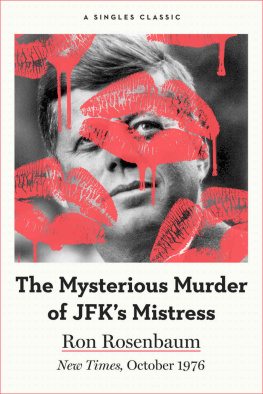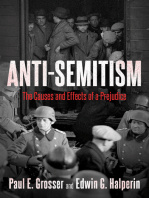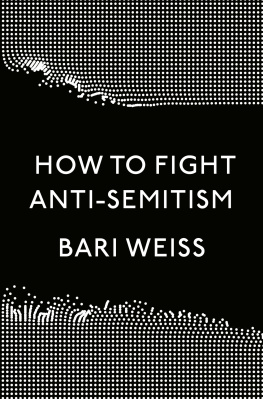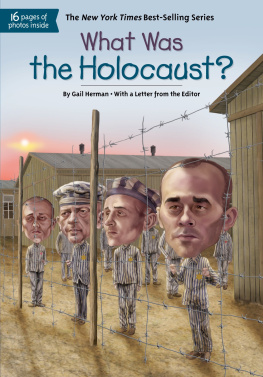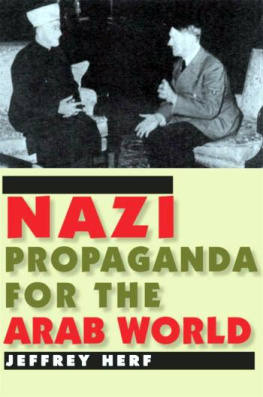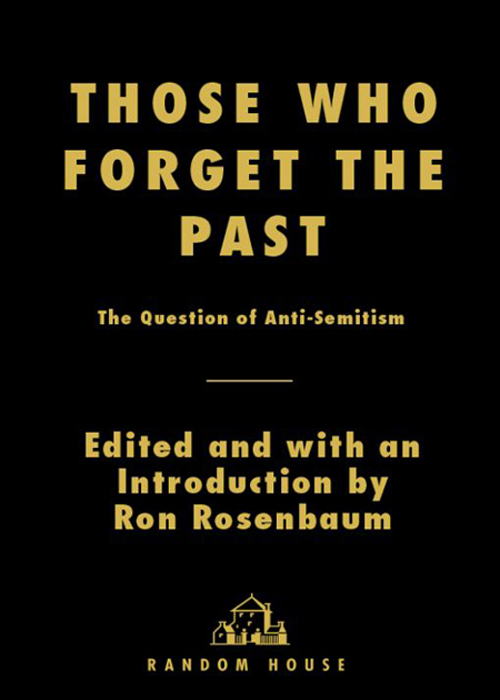
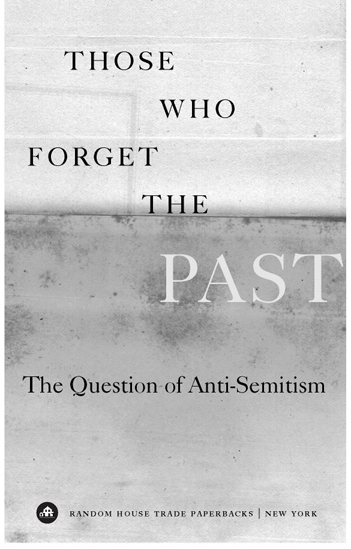
Table of Contents
FOR
DANIEL PEARL
AND HIS FAMILY
EDITED AND WITH AN INTRODUCTION BY
RON ROSENBAUM
Afterword by Cynthia Ozick
POSTSCRIPT
I cant resist making note of a remarkable essay that appeared after the bound galleys of this book went to press: one by Holocaust scholar Omer Bartov, in the February 2, 2004, issue of The New Republic. It was a review of Hitlers so-called second book, the one he wrote after MeinKampf but decided not to publish. Bartovs review was entitled He [Hitler] Meant What He Said. And speaking of contemporary Jew-haters, Bartov added, These are people who mean what they say. In other words, when terrorist groups use exterminationist rhetoric, we must face the possibility that they are not just making idle threats. As Bartov says, There are precedents for this. On the cover of The New Republic, the Bartov essay was billed as Hitler Is Dead, Hitlerism Lives On. My point exactly. Those who forget the past...
February 5, 2004
INTRODUCTION
RON ROSENBAUM
Kidnapped by History
1) A BAD JOKE, OR HALITOSIS OF THE SOUL
It is a mystery whose magnitude calls for humilitywhy antiSemitism, why the persistence, the recurrence, of this particular hatred? The longest hatred, Robert Wistrich, one of the foremost analysts of that long history, called it.
I feel an even greater humility now, writing this final draft of an introduction, than when I began the first draft several months ago. Back then I had only just begun the process of assembling the pieces in this book, one of the most difficult challenges Ive faced. There was so much to include, so much that space constraints forced me to leave out.
I wouldnt claim this collection is exhaustive, but the level of thought, of argumentation, the number of challenging perspectives in the essays herein, cumulatively exceeded my expectations. And left me feeling, when looking at my original introduction, that it didnt do justice to the scope and complexity of the work within. It still doesnt. So it wont hurt my feelings if you stop reading this now and skip to Jonathan Rosens essay and all that follow.
I mention Jonathans essay not merely because it opens the book but because rereading it, fifteen months after it was first published, gave me the idea for this book.
I had met Jonathan when he was cultural editor of The Forward, had been deeply impressed by his book-length essay/ memoir The Talmud and the Internet. We had served on a panel discussion about Shadows on the Hudson, I. B. Singers post-Holocaust novel, and I had taken to having occasional lunches with him at that temple of secular Jewish culture on New Yorks Upper West Side, Barney Greengrass (The Sturgeon King).
It was at one of those lunches early in 2003 that Jonathan asked me if I could fill in for him at a speaking engagement at a Connecticut temple, because his wife was about to give birth, and I asked him for a copy of the piece he had written for the November 4, 2001, issue of The New York Times Magazine.
Id wanted to refer to it in my substitute talk, and I was stunned at how prescient it seemed, reading it this time. Less than two months after 9/11 hed seen the shape of things to come with remarkable acuity: the eruption of violence, physical and rhetorical, against Jews in the Middle East and Europe, that would soon become endemic. And I was struck by the precision with which he expressed feelings Id begun to have on what he called The Uncomfortable Question of AntiSemitism.
Although his family experience was tragic in a way mine wasnthis father had escaped Hitlers Vienna on one of the Kindertransports that rescued Jewish children, most of whose families, like Jonathans fathers family, were later murdered the feeling he described, in 2001, of being kidnapped by history, spoke to me and many people I knew.
He wrote at one point of having been born in 1963, part of the first generation or two of Jews to live, in America at least, without anti-Semitism as a significant fact of life, and now suddenly having Jewsas Jonathan put itbeing turned into a question mark once again. If not here, then in much of the rest of the world.
A question mark again... a chilling phrase. The Question of Anti-Semitism contains within it several questions. Among them: What, if anything, is new about the so-called new antiSemitism? Why does anti-Semitism seem to have migrated from Right to Left? How does one define the difference, when there is one, between anti-Semitism and anti-Zionism?
By that time, there had appeared a significant number of essays, polemics, and exemplary reports on these questions, and it occurred to me that it would be worthwhile to attempt to collect themto document both the phenomenon of contemporary anti-Semitism and the responses to it, in a book such as this. Now that you know how this endeavor began, go, begin if youd like. Go read Jonathan Rosen or Jonathan Freedland or Berel Lang or Ruth R. Wisse or David Mamet, or skip to the fiery Afterword that Cynthia Ozick was gracious enough to write for this book. I wont complain. I wont be taking attendance. And no penalties for not reading consecutively: yes, theres a logic behind the ordering of the sections, and some of the opposing polemics are paired off, but nothing prohibits your skipping around in the book.
Meanwhile Ill just press forward here, for those who remain and those who return, with some observations, some contentions, some conjectures, some controversy.
Id like to begin by talking about a little-known site on the Web Id become fascinated withand its metaphoric resonance. Its called Exposing the Exposer. Its a site run by two guys named Zachary and Mo and is entirely devoted to exposing another website, run by a guy they call Mickey. It seems that Mickey (real first name Michael) began his website by promoting post9/11 conspiracy theories about Jews masterminding the World Trade Center attacksremember the spectral 4,000 Jews (or Israelis) who were supposedly told to stay home that day by that secret cabal behind it all, the Elders of Zion?
Post9 /11 anti-Semitic conspiracy theories soon became a portal for Mickey to enter the underworld of pre9/11 anti-Semitic theories. So his website lurched from the false announcement NPR NEWSCASTER: ISRAEL HAD ADVANCE KNOWLEDGE OF SEPT. 11 to a defense of the ancient blood libel charges that Jewish ritual called for using the blood of murdered Christian children to make pastry for religious feasts. New anti-Semitism, old anti-Semitism: it was one-stop shopping for the Web-surfing Jew-hater or credulous recruit at Mickeys site.
But Zachary and Mo werent having it; they werent letting him get away with it so easily. On their website, Exposing the Exposer, they ceaselessly do just that: expose every myth, every poisonous slur Mickey posts, however many times it has been exposed before. They just wont let the sad, silly fellow (Mickeys other cause, aside from slandering Jews, is public nuditythus, perhaps, the added resonance of their nickname for him: The Exposer) have a free ride on the information superhighway. Not without their cleansing ridicule.
Theres something appealing about the spirit of their mission. As Simon Schama recently pointed out in a talk at a YIVO Institute conference, the Web can be a verification-free environment, and trying to fight the tide of Internet anti-Semitism is a Canute-like task. And yet Zachary and Mo, the two guys who run the Exposing the Exposer website, take a zestfully comic approach to pulling the rug out from under the crude and stupid slurs that Mickey propagates. Somehow by using the diminutive Mickey they not only invoke the cartoon mouse, but make it seem as if the guy theyre addressing is not a bad sort, just a bit mentally challengedlike the slow one in
Next page


